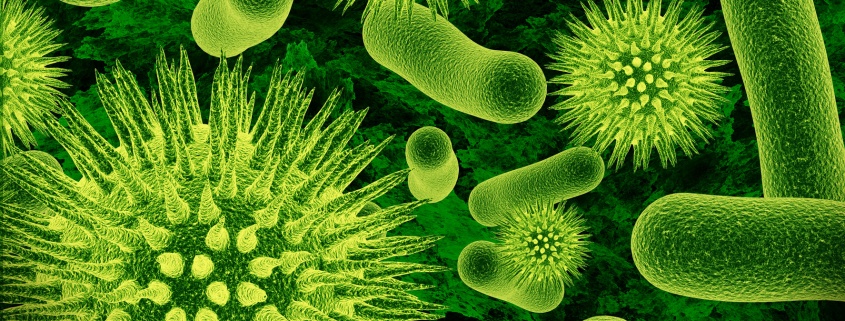Amebiasis
By Fasiha Hasham
The hot humid weather in summer is the main factor for food poisoning, diarrhea and dysentery. Food becomes easily contaminated, as the temperature is in favor for the bacteria and other microorganisms to grow. Due to rains and poor sewerage system, sometimes the drinking water also gets contaminated, which results in epidemic cases of diarrhea and dysentery.
Amebiasis or amebic dysentery is an infection of the large intestine and in severe cases involves the liver too. It mostly affects travelers visiting other countries which are overly populated with poor sanitation. It is commonly seen in people who live in hot humid climate.
The most common symptoms seen in Amebiasis are:
- intermitted diarrhea with foul smelling stools. In early stages there may be constipation followed by diarrhea
- mucus and blood in the stools
- abdominal bloating and gas
- abdominal cramps
- fever
- fatigue and muscles aches
- in severe cases tenderness over the upper right side of the abdomen
- jaundice
Entameoba histolytica is the microscopic parasite responsible for Amebiasis. The parasite can occur in two forms, one is the infection causing form in which the Entameoba is mobile and lives in the colon and feeds on the bacteria and colon tissue, this is known as its trophozite form and is washed out of the colon in the liquid stools and soon dies.
The other for is the passive one in which the parasite can go from one host to the other and in this form the Entameoba forms a cyst around itself and is passed in the stool. This cyst can exist outside the body and can spread the infection to other hosts by flies, cockroaches or with direct contact with hands or food contaminated by feces.
The common human sources of this infection are the people who handle food without properly washing their hands, faulty plumbing or poor sanitation also contribute to the spread of Amebiasis. It can also be contracted by eating raw vegetables or fruits that have been fertilized with human feces or washed in polluted water.
When diagnosing this condition the doctor may take history about any recent travel and other possible sources of infections. He will carefully examine the abdomen, paying extra attention to the liver. Blood and stool samples are send to the lab for analysis.
Diagnosis depends on the study of blood and stool samples. Other diagnostic studies include x-ray and direst examination of the lower colon known as the colonoscopy; it is done with a flexible tube with a special magnifying device. Tissue samples can also be collected during this procedure for laboratory examination. X- Ray with barium enema can also be done; this white chalky substance makes the colon visible o the x-ray.
Treatment consists of taking medications that kill the parasite. Metronidazole (Flagyl or Protostat) is the antibiotic of choice. Normal activities are usually resumed when fever and diarrhea are controlled. Patient should be given a soft diet even after the symptoms are gone that is for a month or two to ensure complete healing.
Most cases of Amebiasis are cured in three weeks or less. Complications are not common if treatment is begun early. Some of the complications that can occur are peritonitis, hepatitis and liver, lung and brain abscess and these complications can only be treated in the hospital.
Some precautions that should be taken to avoid this condition are:
- hands should be properly washed after going to the toilet and as well as before eating.
- when travelling to other countries with poor sanitation use bottled water and boil water for drinking for at least for 5 minutes at high temperature.
- if water is contaminated do not use it for any other purpose including bathing.
Editor’s Note: Dr. Fasiha Hasham obtained her medical degree from Sindh Medical College and completed a residency at Jinnah Post Graduate Medical Centre in Pakistan before moving to the United States. Her specialties include Internal Medicine and Gynecology and Obstetrics. She is married with four children and lives in Farmington Hills, Michigan. The views expressed here are her own.

















2015
1,721 views
views
0
comments